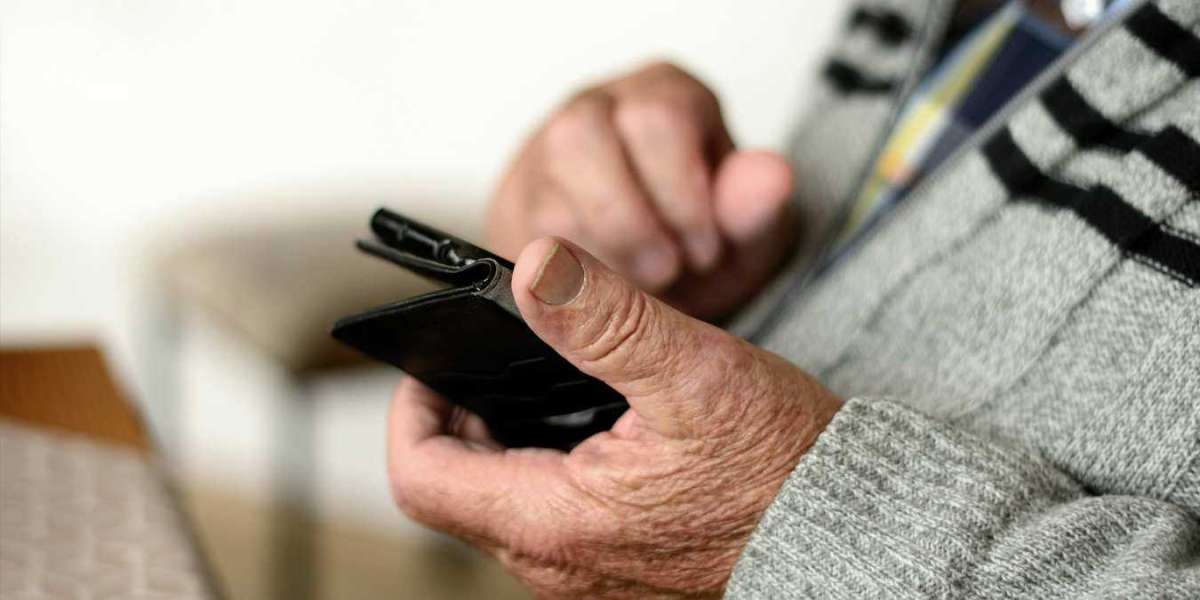COVID standards necessitated adaptations for everyone, but especially for the elderly. Seniors' quality of life has been significantly harmed as a result of their increased susceptibility to the virus and their reliance on traditional commerce. As has always been the case, our most responsible citizens have endured.
Earlier this year, we discovered a significant increase in online activity among older Americans, which we believe is mostly due to pandemic-related diseases. Many Americans aged 60 and older demonstrated their ability to master new skills by using the internet for financial transactions, restaurant ordering, and social media. A second question was whether this technical prowess had inspired widespread cell phone use among older people in a similar way. According to the results of our investigation:
A mobile phone is owned by 98 percent of persons over the age of 60, and four out of every five have a smartphone, according to Pew Research Center.
More than three-quarters of older Americans send text messages at least once a day, with the vast majority stating that texting is their favorite mode of contact. Approximately 46% of respondents claim they texted more this year than they did last year.
In fact, 65 percent of persons over the age of 60 reports using their mobile phones for three hours or more per day. A typical older adult has 25 apps installed on their phone, according to statistics.
older Americans expressed the greatest interest in e-book, podcasts, and home security apps when asked what kind of smartphone apps they would be prepared to try in the next six months.
Cutting the Cord on Communication: Almost all older Americans have switched to cellular communication.
Even while it's a typical comedy trope to portray elderly folks as being reliant on landlines and fax machines, the reality is that practically every older adult today has access to a cell phone.
A smartphone is owned by 98 percent of those aged 60 and older, with 81 percent owning a tablet computer or a smartphone. Sixty-one percent use the intuitive Apple iPhone (which has been dubbed "one of the easiest cell phones for seniors to use"), but a considerable number also have Android devices in their possession.
It is possible that pandemic limitations are driving this degree of adoption. Due to concerns about COVID restricting in-person meetings, elderly Americans are turning to alternative methods of remaining in touch with their families. Although phones do not allow for the exchange of hugs from grandchildren, they do provide a variety of opportunities for staying in touch.
Surprisingly, texting was the most popular mode of communication among seniors, according to the survey. Although older Americans are still not as devoted to texting as younger generations (who preferred it three to one over calling), a majority of mature individuals preferred to communicate via a text message.
Texting was not only the most popular approach, but it was also the most frequently utilized. Texting is now used by three out of every four older Americans at least once each day, with nearly two out of three doing so numerous times.
Most notably, the number of text messages sent and received by older Americans continues to increase. What may have seemed like a novel experience during the first year of the pandemic has gradually become routine. Only 4% of respondents said they texted less this year than they did last year, while 46% said they texted more this year than they did last year. Nonetheless, messaging is far from the only activity taking place on the phones of mature adults.
There were some gender-based disparities in-app downloads discovered, but overall, meteorological apps were the most popular among both sexes in terms of downloads.
A significant difference was found in the likelihood of women installing social media apps, commerce apps, e-book readers, and games. Financial trackers, business/work platforms, and dating services were among the types of apps that males were more likely to install (which men downloaded 3x as often as women).
Social media apps were the most popular programs among both men and women, and they were utilized almost equally.
Facebook, in particular, is the most frequently used app on the smartphones of older Americans. Despite the fact that it has lost popularity among younger users, the platform's combination of news, entertainment, and family connections continue to be popular among the more mature population.
Age-appropriate mobile apps have become so popular with older folks that they are spending as much time on their phones as younger people do. Two out of every three Americans over the age of 60 spend three or more hours on their phones each day, which is consistent with the national average of three hours and ten minutes. One of every four ladies admitted to using their phones for at least six hours every day.
What lies ahead for those who hold smartphones that are more than 60 years old after mastering messaging and downloading hundreds of apps? Maybe there are some silver foxes on TikTok and some senior Snapchatters? The purpose of our survey was to find out what will happen next.
Apps that are sure to be a hit with seniors
In order to identify which downloads are still growing popularity among older Americans, we first looked at which categories had been downloaded most recently by this demographic. The following sorts of apps were the most popular among the 30 percent of smartphone owners who tried new types of apps in the previous year:

A total of at least 15 percent of each category's users joined in the past year, including health-tracking programs, home security monitors, podcast players, and dating applications, according to the study's findings.
As part of our research, we were interested in learning about which applications seniors would start using in the next six months. We discovered that 62 percent of seniors were open to trying new apps in the next six months. These fields drew the most attention from individuals who were willing to experiment with new types of platforms:

It is clear that e-books, podcasts, and video streaming have untapped potential among seniors, indicating their interest in additional entertainment options. The desire to download new travel apps, on the other hand, likely reflects the widespread expectation that trips and tourism will soon return to the real world.
Final Thoughts
Older Americans who wanted to stay in touch with loved ones and make their lives as comfortable as possible while living under pandemic limitations turned to the internet, and they did so with the assistance of cell phones.
Given their inability to prevent children from becoming obsessed with screens, it appears that many elderly have opted to join the fray.
The majority of people over the age of 60 are texting on a daily basis, using social media, and spending hours on their devices each day, with the frequency of texting, increasing year on year and interest in new apps continuing to climb.
Additionally, service providers have seen – and perhaps aided – the expansion of this mature market by offering good mobile plans for senior clients, so usage is unlikely to wane in the foreseeable future.
Time to get comfortable with the sight of older Americans swiping left and right on their smartphones, trading stocks online, and downloading new apps without hesitation.


